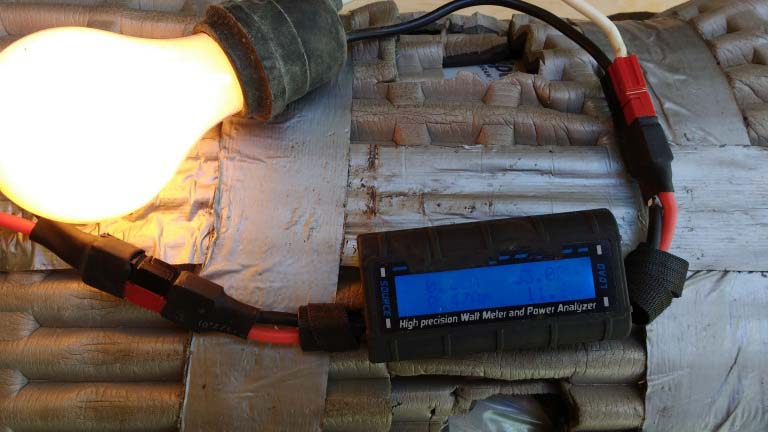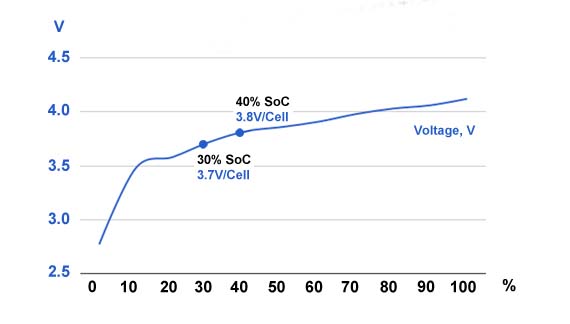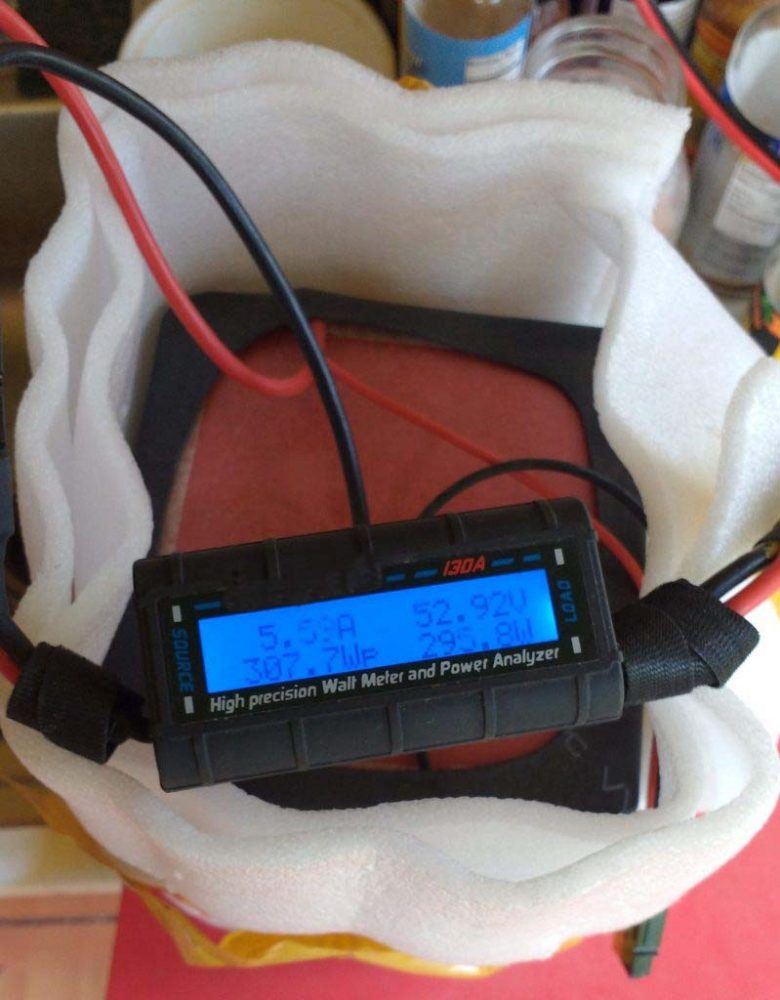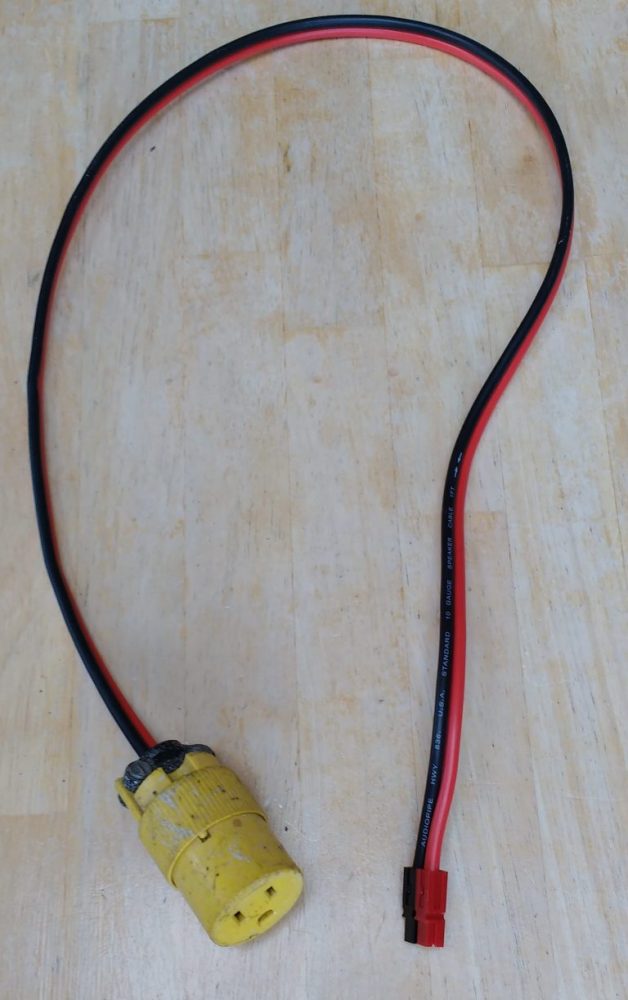Long-term lithium battery pack storage
Remember the good old days of lead acid, where you could throw your car batteries on a $12 float charger and forget about them for years? How I long for those days. Welcome to a new era of lithium batteries, where long-term storage without degrading battery performance is not a simple and elegant process. The problem with lithium is that, unlike lead acid, it doesn’t like to be stored on a full charge for more than a few months at a time, preferring to be stored at 40-50% charge. The reasons for this are complex, but for the purposes of this non-technical article, we’ll only discuss practical applications of lithium battery storage and assume that everything that happens inside the battery is magical. The problem is that most people can’t easily charge their batteries to 50%, and running an e-bike from a full charge can be a hassle without using it properly.
If you’re interested in reading a more technical note on battery storage, you can check out this article on Battery University. In conclusion, all batteries self-discharge over time, which isn’t really a problem. Different chemicals self-discharge in different amounts based on their state of charge (SOC) and the temperature at which they are stored. The colder batteries are stored, the less often they will self-discharge, but no battery really likes going below freezing. It’s also important not to have too much humidity, around 50% relative humidity is best, but when in doubt, I’d err on the dryer side instead of the wet side. Self-discharge is not a big deal unless the Li-Ion battery is left for so long that it self-discharges below the LVC of the BMS, in which case your expensive Li-ion battery becomes a very expensive doorstop. You could try using a discharge cord to force-charge the battery pack to bring it back to normal, then switch to a normal charging cord after about an hour, but it’s a risky proposition (I’ve done it successfully twice, but I The external charging home is far from my home). Storing a lithium battery for extended periods of time from a fully discharged state is absolutely guaranteed to kill any lithium battery, so don’t do it.
It is important to distinguish between recoverable losses (ie the battery is normally discharged and then recharged) and non-recoverable losses. Irrecoverable loss is the loss of battery capacity that can result from improper battery storage. When you charge a lithium battery pack, it charges to a certain voltage and then pretty much stops. Once the charger is turned off, the voltage falls back to the peak quiescent voltage of the battery pack. The only way to tell if your package is losing capacity is if the peak voltage decreases over time. This happens naturally with all lithium batteries, but the scientific consensus is that storing lithium battery packs at 100% capacity without using them accelerates this degradation process.
What is the voltage to store your bag
The recommended voltage to store the battery pack is 40-50%, but for this article I recommend that you store the battery at 40%. If you have a 52v pack, store it at 53.2v, if you have a 48v pack, store it at 49.4v. The system fails with some power tools whose battery pack voltage is listed as fully charged battery pack voltage, such as the 56v Ego battery pack I love so much. It’s a confusing marketing gimmick to keep uninformed consumers Some believe their battery system has more energy than it actually does. For Ego battery packs, charging will automatically discharge the battery pack if it is left in the charger for more than a few months, so you don’t have to worry about manually discharging the battery. My wife and I have 3 Ego batteries and almost all Ego power tools and produce and use them every day on our organic permaculture farm.
For most lithium battery packs, the single cell range for 40-50% SOC is between 3.7 and 3.8. Lipos and LifePo4 batteries will have completely different voltage ranges and you need to calculate the correct SOC for the battery pack. The shipping requirement for NMC (the most common battery) is 3.6v per battery, which is about 30% of capacity. For a complete overview of battery types and their voltages, check out this article from Battery University. When in doubt, just charge the battery pack to near its nominal voltage for long-term storage and it should be fine.
Every 6 months or so, you should check your package and be charged up to 40%. While I often let this process slip for about a year, you should make sure that no matter what you do, you don’t let the battery slip below the LVC of the battery’s BMS, otherwise your battery may go to sleep and never resume Newborn (unless you kiss it). Before I connect the charger, I’ll give a rough idea of how much I want to charge it, then set a timer to check it to make sure the pack’s SOC doesn’t exceed 50%. If i have a 10Ah battery and i need to charge it 20% with a 2 amp charger then that means i have to put it on the charger for an hour (2 Ah / 2 Amp charger = 1
How to get your battery pack to the correct voltage
One of the problems a lot of people have is that getting a battery pack to the right voltage for storage is a pain. When charging is off, the battery pack is fully charged and then you have to drain it again. You can’t just put an e-bike on a stand and run the motor because running it at full speed with no load would overheat any e-bike motor I’ve ever touched. You can get on an e-bike and ride around until the display shows the voltage you want to store the battery at, but that can also be annoying. I’ve found two ways to quickly and safely adjust the battery voltage without leaving the house.
Incandescent light bulb
You can make a quick and dirty light bulb adapter for about $2. Get any normal light bulb adapter with pigtails from the hardware store and crimp a few Anderson or solder and XT60 onto it. Power/ground doesn’t matter because the bulb is basically a giant resistor that slowly drains the battery at about 8-12 watts or 0.2 amps. If you don’t have a decent power meter in series with the battery then you’ll have to estimate how long it will take by calculating amp draw * time . If you want to drain 5 Ah in a 10 Ah package, it will take about 25 hours (5 / .2 = 25). It doesn’t have to be perfect, it’s just an estimate. Never check the battery voltage by sticking the probes to the XT60 male charging port, you may short the pins, which will cause the battery pack to solder the probes to the pins and potentially explode. Only check the voltage at the female XT90 discharge plug end as there is no chance of your clumsy monkey fingers causing a short.
Use the oven
If you’re impatient like me, then you don’t want to wait a few days for your pack to run out, there’s an easier and faster way to do it. You can make a $5 adapter in about 10 minutes by crimping an Anderson connector onto a regular 120-volt AC household extension cord plug. It doesn’t matter if power and ground are connected to any plug, just like a light bulb, the heating element is just a large resistor that converts battery power into heat. The ground connector on the AC extension plug is not used. Using this cord, my crappy little $30 toaster draws about 300 watts at around 5.5 amps. As mentioned above, calculate the power you want to draw by multiplying the current draw by the discharge time. If you want to get 10Ah out of a big 20Ah pack, then you need to not bake anything for about 1.8 hours or so. (10 / 5.5 = 1. 8) Under no circumstances should you plug batteries into space heaters, because while they may work, most space heaters’ fans may not function properly and you may accidentally ( or deliberately) burn down your house. I also don’t recommend plugging any other device into your homemade power cord, as 58v DC is nothing like 120V AC, and you’ll almost certainly break 99% of what you plug it into.
Lithium batteries are safer at half discharge
One of the more interesting work performed by the Battery Destruction Lab was the systematic crushing of perfect 18650 batteries using a hydraulic press. The first thing they realized was that a battery with a SOC of 50% was less likely to explode, if at all. On the other hand, if the battery is fully charged or even *gasp* overcharged, you’re bound to get a great fireworks show. I’ve never heard of a lithium battery that is neither charged nor discharged explode, but in theory it could happen. Your best bet is to store the battery in a woodstove or in a modified ammo box while charging like I did, in the garage if you don’t have a fireplace. The smoke from lithium fires is toxic, and that smoke alone could destroy everything in your home. I also recommend keeping the pack in a wood stove or in an ammo box in the garage to be safe when using the bulb or toaster to unload the pack.
Where to store your bag
Although some people store Lithium battery packs in the refrigerator, I do not recommend this as the humidity inside the refrigerator can be very high, which can cause corrosion problems in the connections and BMS. The best place to store them is in a very cool, dry place out of the reach of animals and pets. Never store battery packs in your car, as summer temperatures can exceed 100 degrees Fahrenheit. Heat kills the battery pack, and you want to keep the battery pack as cool as possible.
When done correctly, storing lithium battery packs for months on end is easy and safe. The right packaging storage techniques can greatly increase the longevity and capacity of your packaging, so why not? I hope this article has been helpful to you, and even more so that you don’t accidentally do something stupid and blow yourself up. Remember, the easiest and safest way to get your pack down to 50% is to ride a bike and use up half the pack. Keep in mind that when you charge your battery pack, it will read higher than it actually is for about 15 minutes after you unplug it from the charger, and if you use it under heavy load, it will After a few minutes the reading was slightly lower than the actual battery pack voltage and the load was removed.
Our factory provide OEM and ODM,if you are interested in our electric bike, you can log on our official website to know more about details. If you have any query or electric bicycle transportation problem,please feel free to contact us and we will contact you APSAP. https://gzdlsdz.en.alibaba.com/
Please Leave us an inquiry.We are looking forward to your arrival.
 Shuangye ebike
Shuangye ebike




